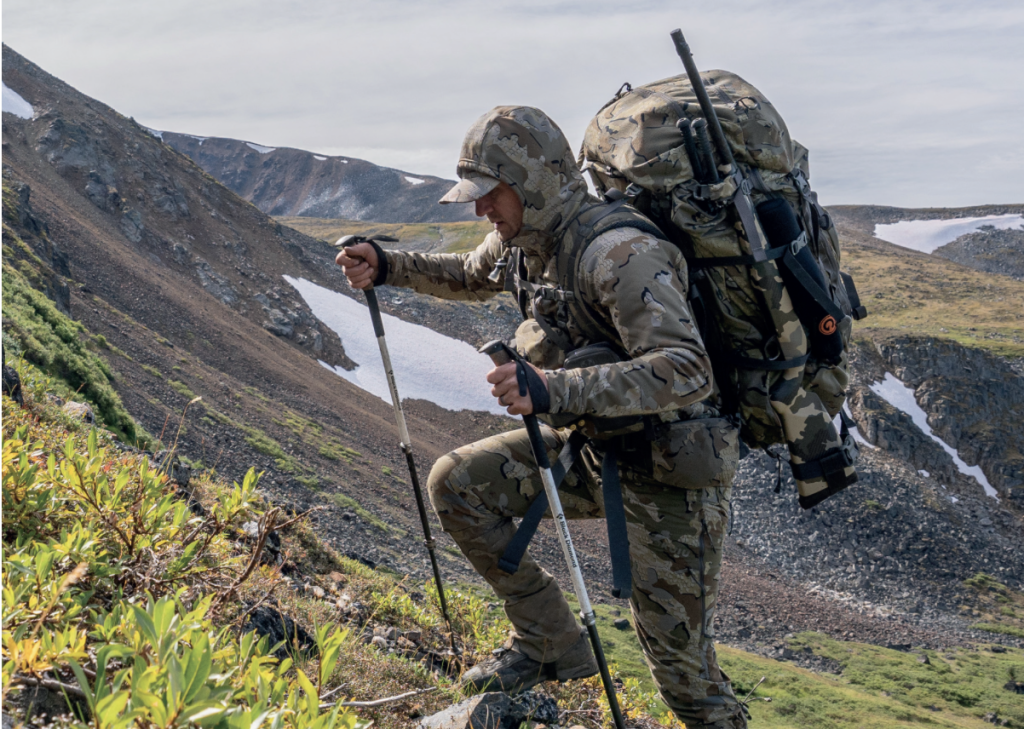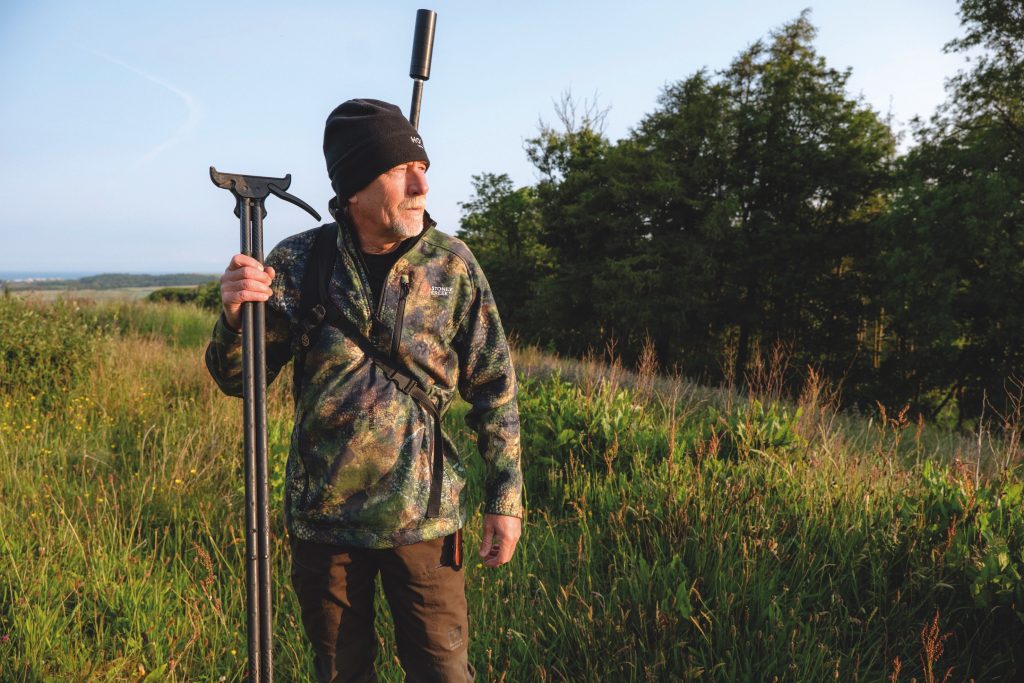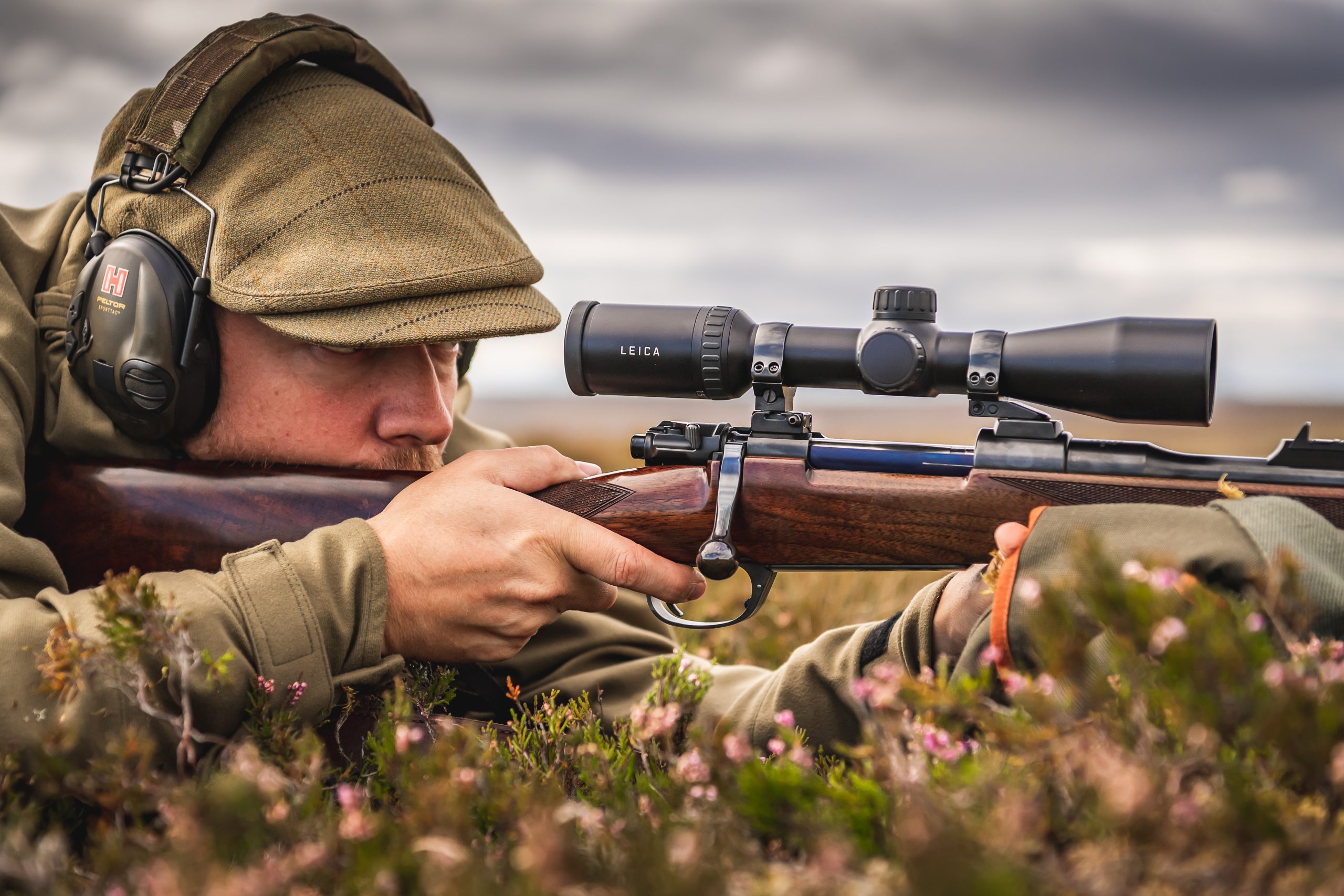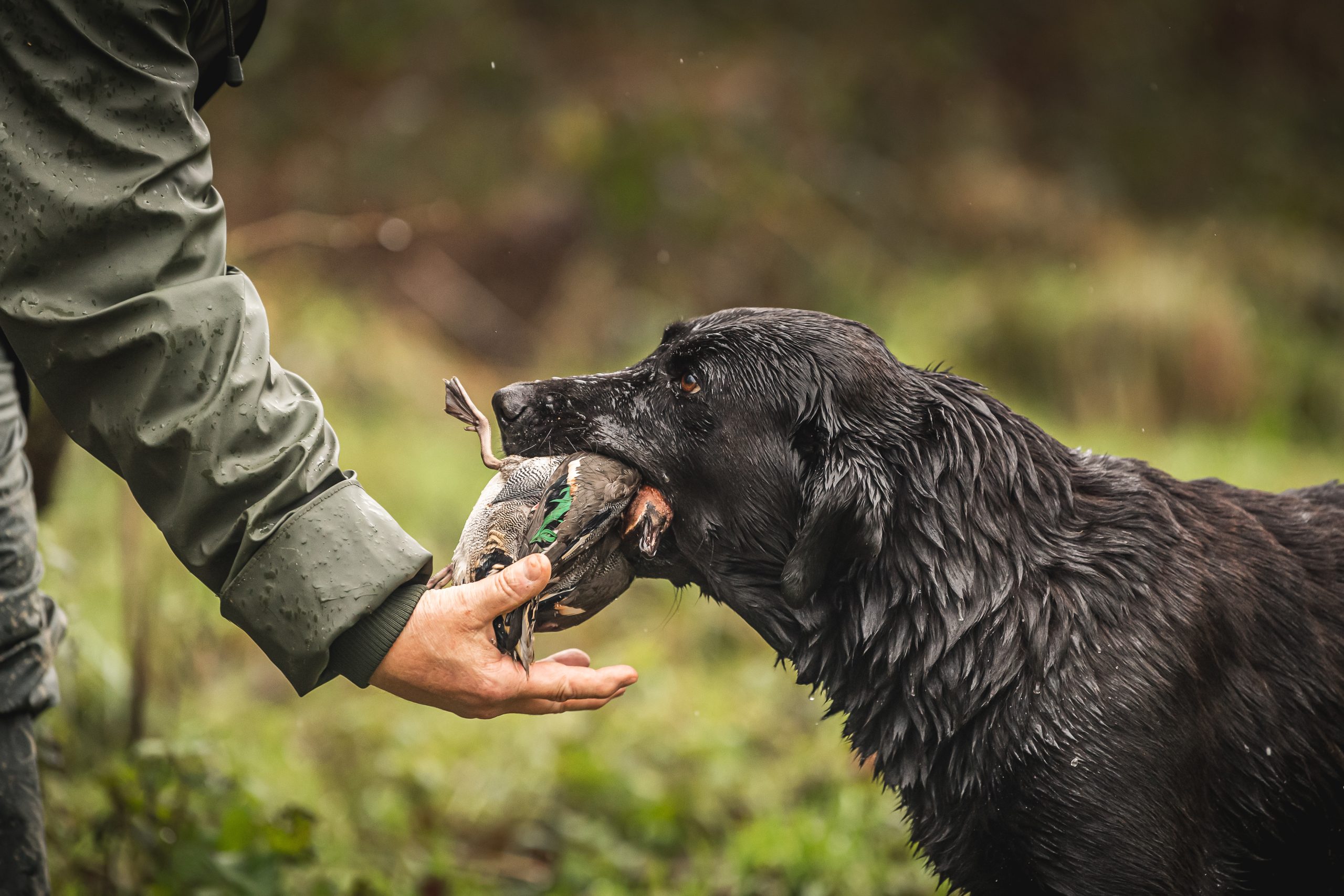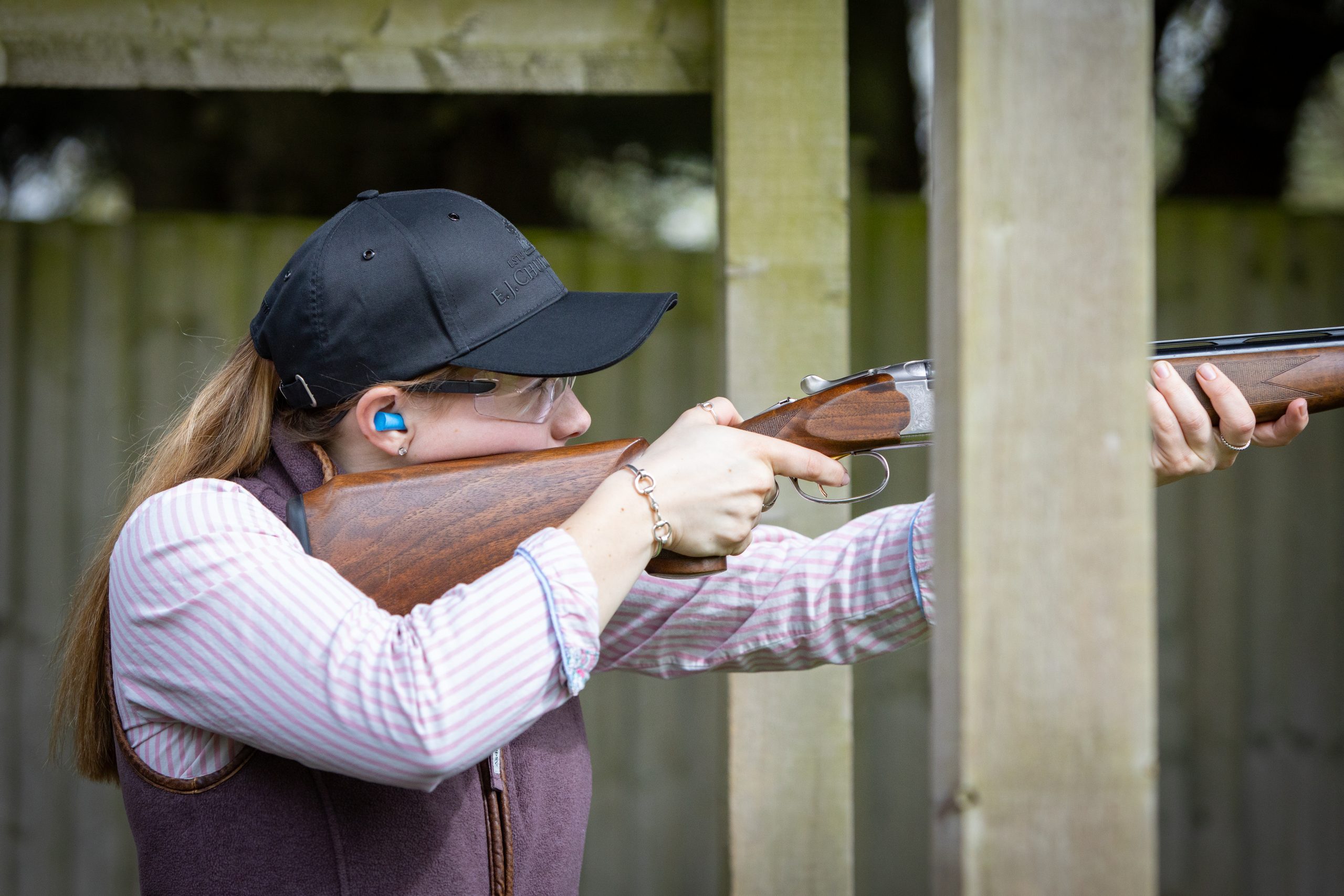Gear
How to make sure your airgun ammo and barrel are compatible
Would you like to speak to our readers? We offer sponsored articles and advertising to put you in front of our audience. Find out more.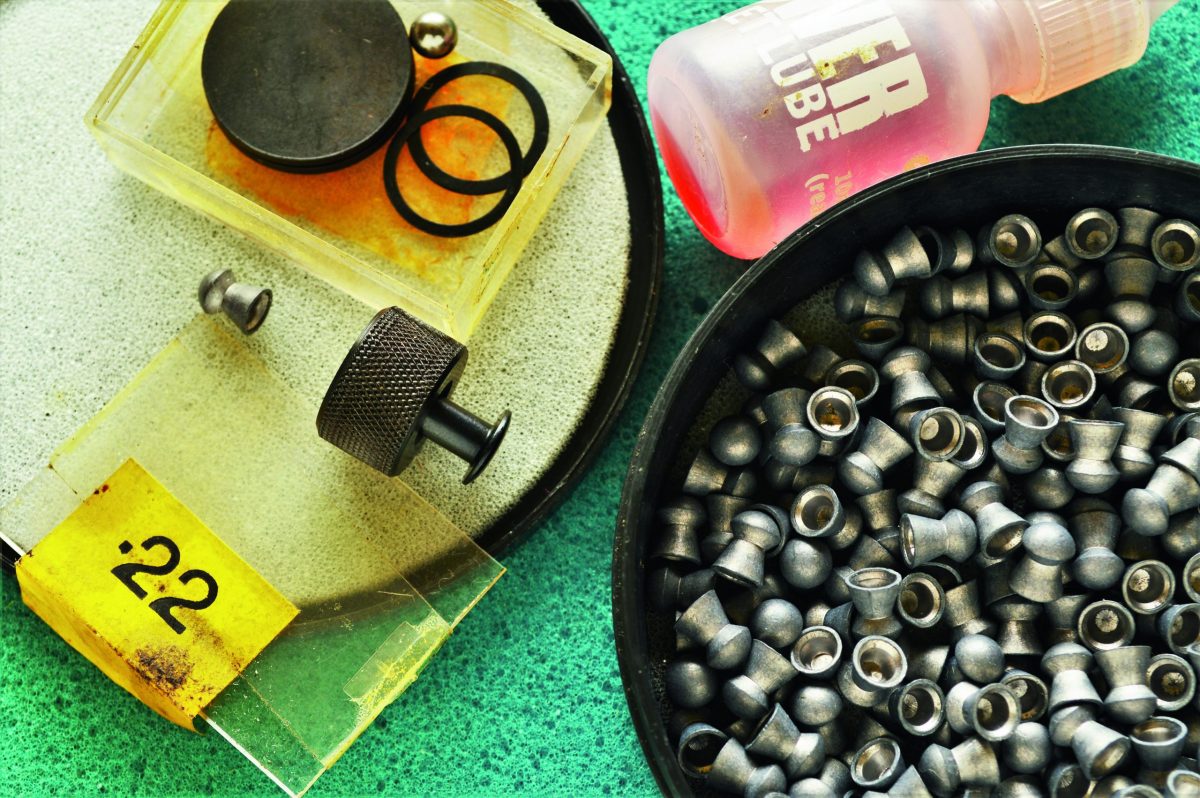
As ammo passes down the bore of a rifled barrel, the lands and grooves impart spin, stabilising the projectile and giving it more accuracy – important when shooting at longer distances.
Unlike powder-burning firearms, the pressures involved are much less violent with airguns, so the projectile’s velocity is lower. However, grain for grain, the pellet or ball still gets blasted down the barrel, dragged into a spin by the rifling before leaving the muzzle. Examining a spent pellet will reveal marks to the head and skirt where they have engaged with the lands and grooves.
Examining spent pellets that have been retrieved from a cloth backstop can reveal what happens to them as they travel down the barrel.
The head and skirt can be scored, often leaving them looking like they’ve been chewed by an angry moggy. (Does a pellet’s head size matter? Read more here). In more extreme cases where a pellet is really too tight a fit for a particular barrel, it can be so distressed that it looks like it’s been through a Hoover. The sort of damage that some barrels do to pellets before they leave the muzzle means that any arguing over the pellet’s brand, quality and price is therefore often a total waste of a shooter’s time. (Click here for our roundup of the best budget pellets).
Trying out a vintage airgun with a smoothbore barrel can reveal some rather strange surprises. People have even tested smoothbore and rifled barrels on the same vintage airguns and found the smoothbore to be a tad more accurate at shorter airgun distances in the same two identical guns.
The rifled barrel used on that occasion will have had different bore characteristics to the smoothbore. It may also have had some minor flaws unique to that bore if it was a factory unit with standard finishing. Hard to believe that a well-made and polished smoothbore barrel can in theory win hands down over a badly finished rifled barrel.
Manufactured brilliance
Today, we expect finer tolerances and barrel finishing, so our shooting distances have increased. For long-range target shooting in a sub-12 ft-lb rifle, any barrel is going to need all the help it can get, especially today when benchrest shooting with PCPs is more common. Superbly worked barrels, matched to a specifically chosen pellet after testing, means extreme distances are now the norm when previously they were believed to be the stuff of fairytales.
Since rifling was added to airgun barrels, pellet-to-barrel compatibility has, however, always been in discussion.
The barrel’s twist rate, bore finish and especially how the muzzle is finished and the crown to protect it, are accepted areas of attention amongst airgun shooters.
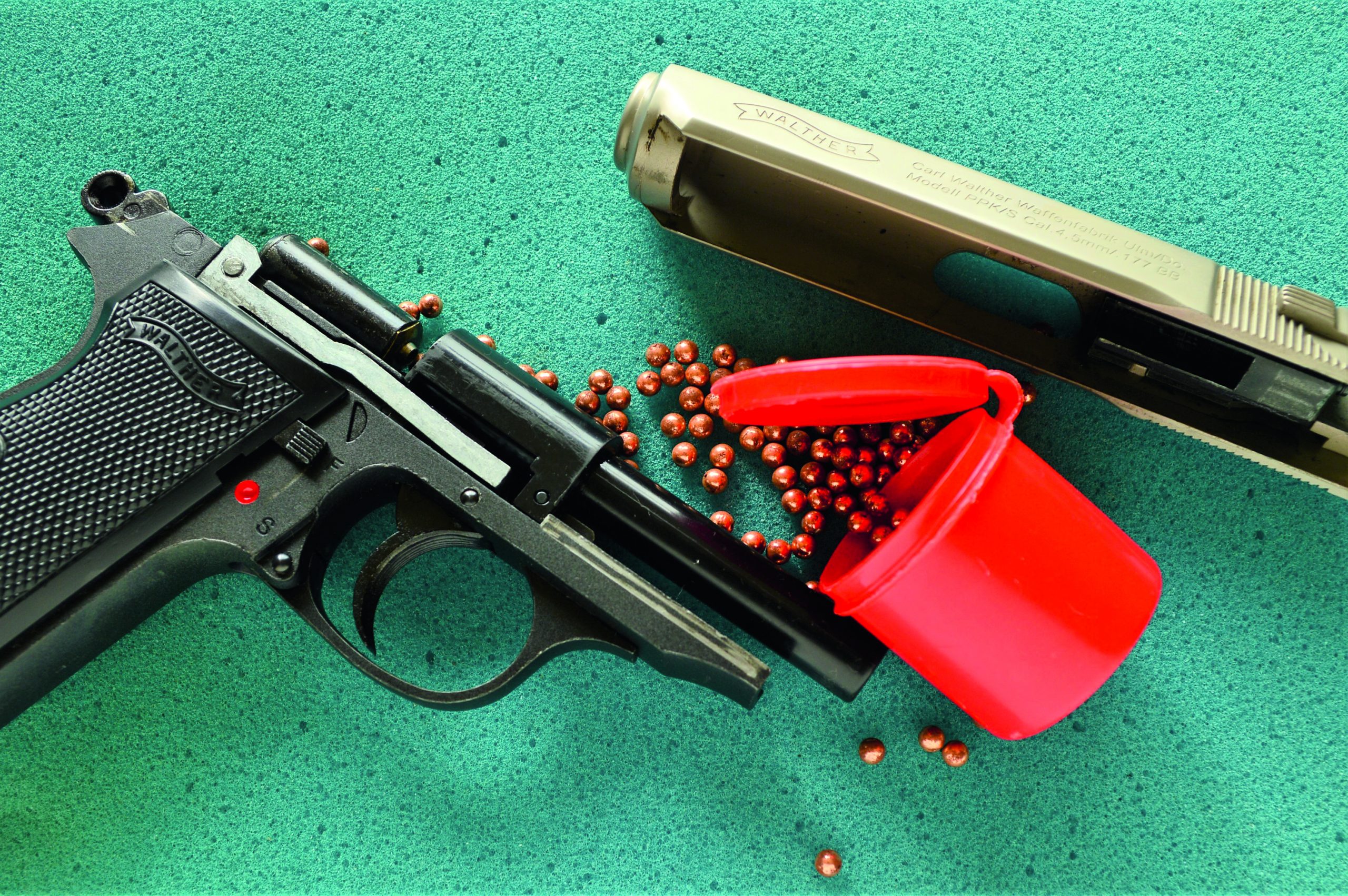
Facing page: These .22 pellets have been prepped the old-fashioned way, being cleaned, lubed and then re-sized to ease friction. Above: Even BB guns benefit from having ammo matched to their barrel, as the dimensions will all vary slightly from type to type
However, many people still argue that the ammo is the biggest cause of failure, blaming type, manufacturing quality or low cost as the reason. We must expect every barrel to have its own unique eccentricities, which will make some pellets unusable, most passable and one or two superb.
So many owners have slowly realised that a pellet that does not work in one of their gun’s barrels may well work superbly in another, and vice versa. It’s always been about compatibility based on an individual barrel’s characteristics.
The proven method to minimise this incompatibility is to test any airgun with a selection of pellets. It’s not difficult and can even be fun! For an initial test, traditional domeheaded pellets are best for this simple exercise, and other designs can be tested at a later date.
A number of different weights can be tried, and things are even better these days with the same pellet sometimes being available in different head sizes. In buying .22 options, for example, this could result in a 5.51 pellet running better in a barrel than the same pellet in 5.52. Testing with a number of pellet designs and size variations will bring dividends in determining the best pellet for the job – but remember in only that one specific barrel.
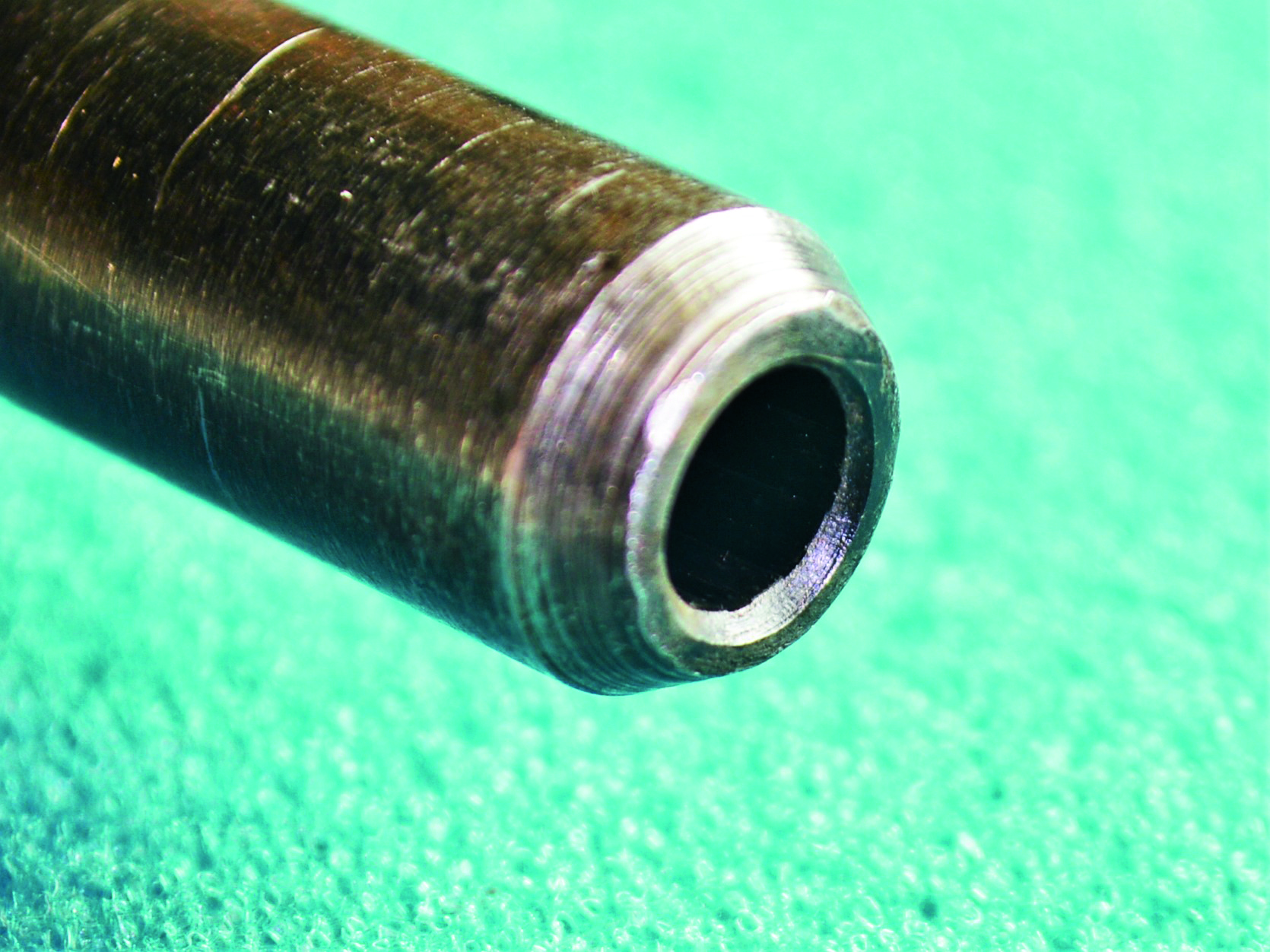
This Crosman barrel shows a clean countersunk crown, with the lands and grooves of the rifling just about visible
The best fit
Most pellets come in only one head size and the traditional way was to resize them. Chronographing pellets straight out of the tin against others that had been resized revealed that the sized pellets were flying at a lower velocity. (Read here for our list of the best chronographs for airguns). Sizing a pellet almost always means reducing its diameter, and that can create a better match to the bore, reducing friction. Less friction means less damage to the pellet, which should translate into better accuracy. (Read here for more on how to improve your airgun marksmanship).
If a pellet is resized too much, the end result will be a projectile that dribbles its way through the barrel like a golf ball down a drainpipe, which is by coincidence the problem associated with most modern CO2 BB guns.
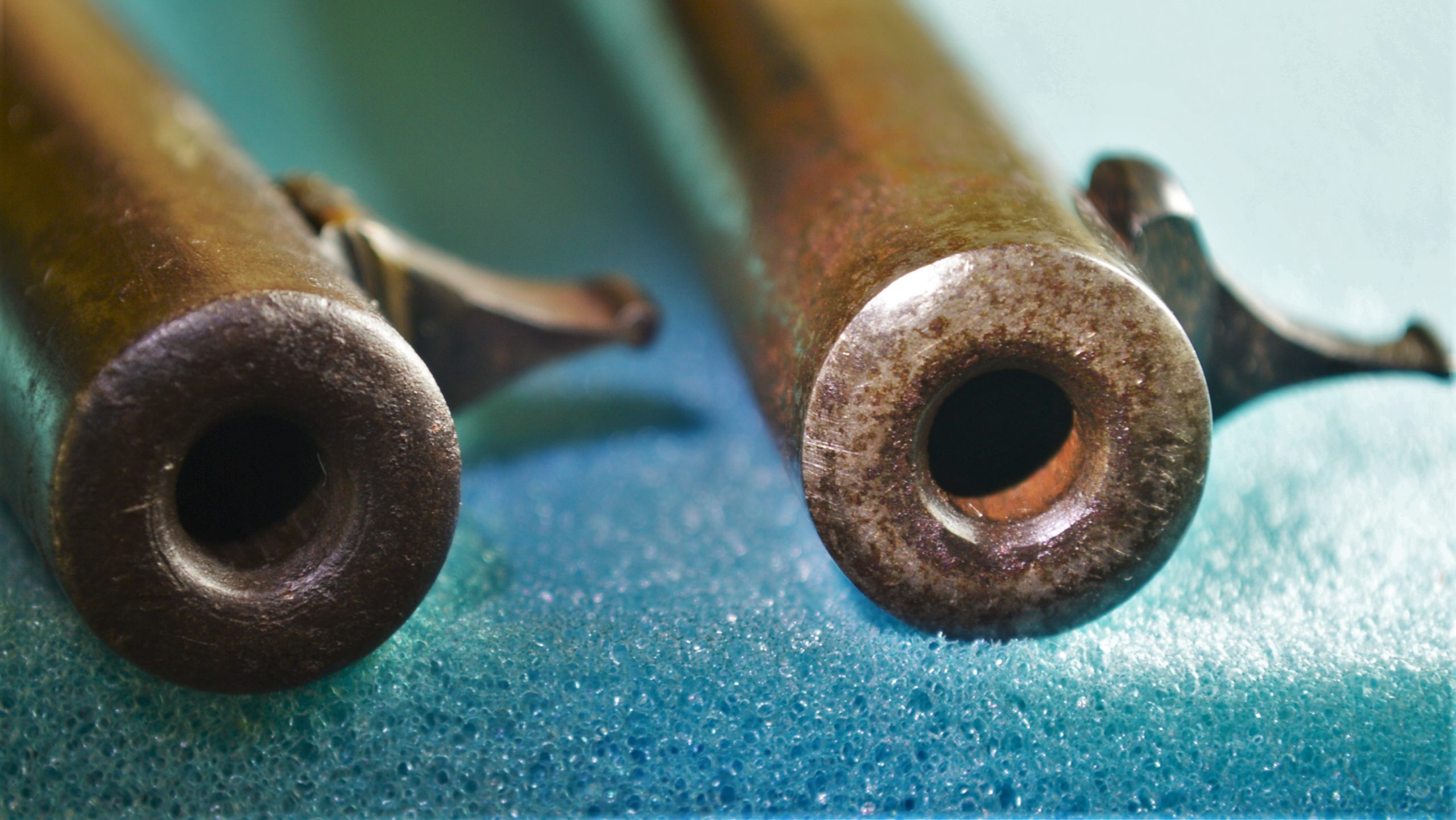
Even after a century, the crowns are still protecting the bores of these BSA Standards, ensuring the best possible exit of the pellet
Whilst today few air rifle manufacturers would opt to provide a smoothbore barrel option on an air rifle, it was common in the past, and today most BB guns rely on this. Their accuracy, or indeed lack of it, is again solely down to compatibility between the ammo and the barrel.
Roll a BB into any modern CO2 gun’s barrel and whilst some may be too tight, others can fall through onto the floor. This has nothing to do with the quality of the barrel, but the difference between the internal diameter of the tube and the exterior overall diameter of most common steel BBs.
Most enjoy only what can be described as a rattling good fit. Some people have been switching to lead ball ammo to get a better bore fit, going up or down in size from the usually undersized BB to 4.46mm or even the full 4.5mm. Others have gone at the problem from a different angle, by custom manufacturing tighter steel smoothbore barrels for use with steel BBs, resulting in dramatic increases in performance.
The bottom line is that any airgun needs to be tested with a selection of ammo to arrive at the best for that particular barrel. Every barrel chews ammo differently. The next time a mate says he bought some pellets and they were rubbish, hold your hands out quickly and take all that’s going – they might be totally superb in your gun!
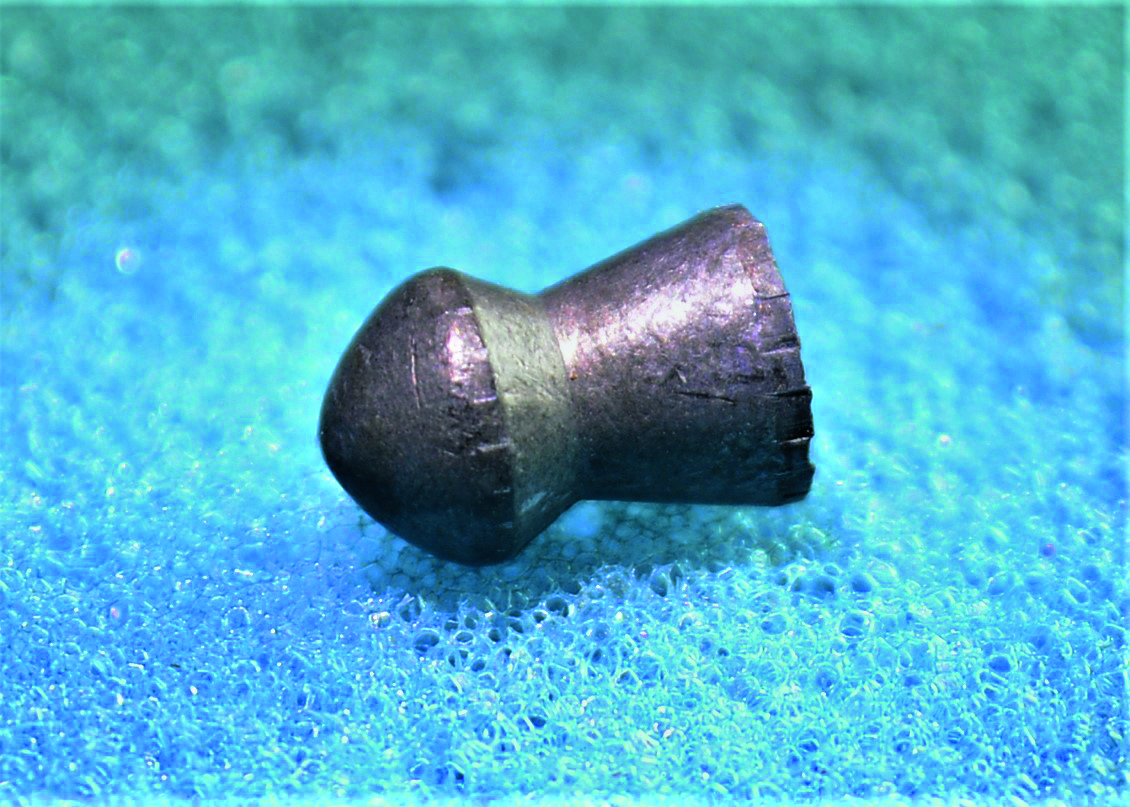
Some lead has been either compressed or shaved from this pellet as it travelled down the barrel, but only a small amount
Related articles
Gear product reviews
Science in colour
The art of concealment is the hunter’s superpower and camo plays a huge role
By Time Well Spent
Gear buying guides
Top stalking layers to beat the heat
Chris Dalton discovers five garments designed to cope with frosty starts to midday heat.
By Time Well Spent
Manage Consent
To provide the best experiences, we use technologies like cookies to store and/or access device information. Consenting to these technologies will allow us to process data such as browsing behavior or unique IDs on this site. Not consenting or withdrawing consent, may adversely affect certain features and functions.
Functional Always active
The technical storage or access is strictly necessary for the legitimate purpose of enabling the use of a specific service explicitly requested by the subscriber or user, or for the sole purpose of carrying out the transmission of a communication over an electronic communications network.
Preferences
The technical storage or access is necessary for the legitimate purpose of storing preferences that are not requested by the subscriber or user.
Statistics
The technical storage or access that is used exclusively for statistical purposes.
The technical storage or access that is used exclusively for anonymous statistical purposes. Without a subpoena, voluntary compliance on the part of your Internet Service Provider, or additional records from a third party, information stored or retrieved for this purpose alone cannot usually be used to identify you.
Marketing
The technical storage or access is required to create user profiles to send advertising, or to track the user on a website or across several websites for similar marketing purposes.




